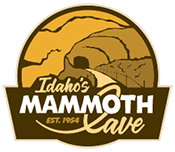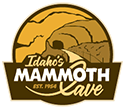Nestled deep within Idaho’s breathtaking Sawtooth Wilderness, Alice Lake is a pristine alpine treasure that draws outdoor enthusiasts from all over. Surrounded by towering granite peaks, lush forests, and crystal-clear waters, Alice Lake offers a perfect blend of adventure and tranquility. Whether you’re a day hiker, a seasoned backpacker, or someone seeking solitude in nature, a visit to Alice Lake is an unforgettable experience.
The Gateway to Idaho’s Wilderness
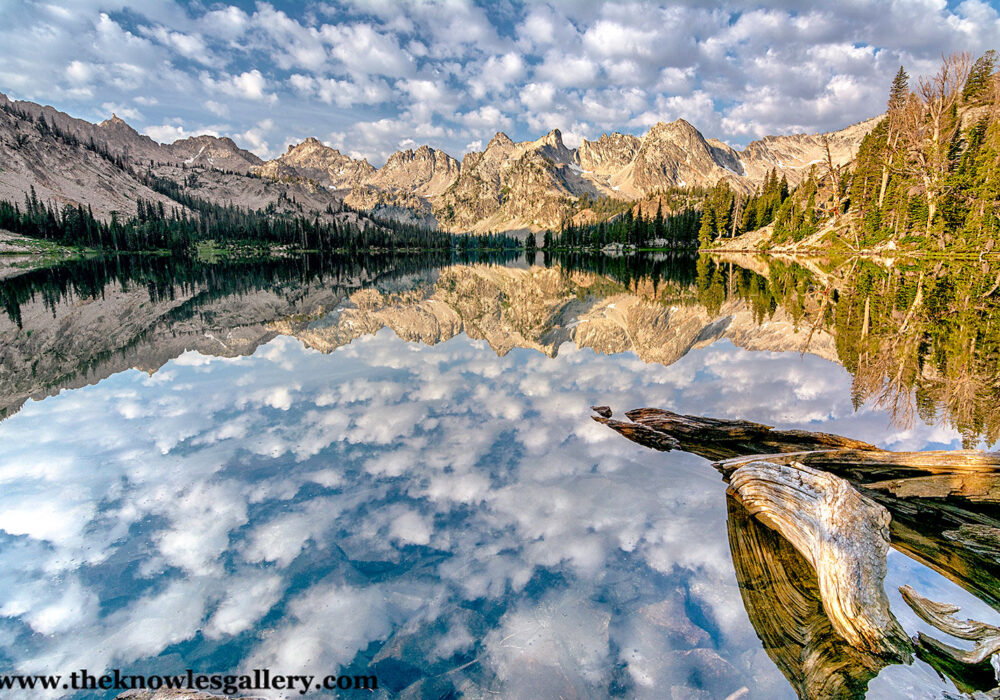
“Alice Lake Sawtooth Mountains Idaho” by Knowles Gallery is licensed under CC BY 2.0.
Alice Lake is part of the renowned Tin Cup Hiker’s Loop, a trail system that connects several of the Sawtooth Wilderness’s most stunning alpine lakes, including Toxaway Lake and Twin Lakes. This 19-mile loop crosses over Snowyside Pass and features some of the most awe-inspiring views in the region. However, Alice Lake is also accessible as a standalone hike, making it a popular destination for those seeking a day trip or overnight adventure.
How to Get There
Alice Lake is accessed via the Tin Cup Trailhead at Pettit Lake Campground, located approximately 20 miles south of Stanley, Idaho, on State Highway 75. From the highway, turn onto Pettit Lake Road, a partially unpaved route that leads to the campground parking area. Parking is limited, so arriving early is recommended, especially during the summer months. Additional overflow parking is available at the Tin Cup Horse Trailhead.
The Hike to Alice Lake
The hike to Alice Lake is an 11.6-mile round-trip journey with an elevation gain of approximately 1,600 feet. The trail begins by following the edge of Pettit Lake before heading into the forest. Here’s a breakdown of what to expect along the way:
- First Mile: The trail is relatively flat as it skirts the shoreline of Pettit Lake. At about 1.2 miles in, you’ll reach a sign marking the entrance to the Sawtooth Wilderness. This is where you’ll need to fill out a free backcountry permit, whether your day hiking or camping.
- Creek Crossings: The trail includes four creek crossings, which can vary in difficulty depending on the season. In the spring and early summer, the water levels are higher, so you may need to wade through or use water shoes. Later in the season, these crossings are often manageable by hopping across rocks or using fallen logs.
- The Ascent: After passing a grove of aspen trees about halfway into the hike, the trail begins to climb. The switchbacks here account for most of the elevation gain, offering panoramic views of the surrounding granite peaks and lush valleys.
- Arrival at Alice Lake: About 5.5 miles into the hike, you’ll reach the edge of Alice Lake. The view is nothing short of spectacular, with the lake’s serene waters reflecting the rugged peaks, including Idaho’s “El Capitan” and the jagged ridgeline known as the Dragon’s Back.
Camping at Alice Lake
Backcountry camping at Alice Lake is a popular option for those looking to extend their stay and explore the area further. Here are some key considerations:
- Camping Rules: Camp at least 100 feet from lakes, streams, and trails, as required by Sawtooth Wilderness regulations. To minimize environmental impact, following Leave No Trace principles is strongly encouraged.
- No Campfires: Due to high usage and fragile ecosystems, campfires are prohibited in the Alice Lake drainage. Use a portable stove for cooking.
- Space Availability: While Alice Lake has several designated camping spots, it can become crowded during peak season. If space is limited, consider hiking an additional mile to Twin Lakes for a quieter, more secluded experience.
Seasonal Highlights
Alice Lake is best visited between July and September, when the trail is free of snow and the weather is most favorable. Here’s what to expect in different seasons:
- Spring (May to June): Snowmelt makes creek crossings challenging, and snow often lingers on the higher sections of the trail. However, wildflowers begin to bloom, adding vibrant colors to the landscape.
- Summer (July to August): This is the most popular time to visit, with warm daytime temperatures and cooler nights. The trails are busy, but the scenery is at its peak, with clear skies and abundant wildlife.
- Fall (September to early October): Cooler temperatures and fewer crowds make fall an ideal time to hike. The small aspen grove along the trail turns brilliant yellow, adding to the area’s beauty. Be prepared for sudden weather changes, as snow can arrive early in the season.
- Winter (October to April): The trail is typically covered in snow, making access difficult. While winter brings a serene beauty to the area, hiking to Alice Lake is not recommended without proper equipment and experience.
Wildlife & Fishing
Alice Lake is home to a variety of wildlife, including brook trout, which make it a popular spot for anglers. Bring your fishing gear and a valid Idaho fishing license for a chance to catch these feisty fish. Other wildlife sightings may include marmots, deer, and occasionally black bears. To protect both visitors and wildlife, store food in bear-proof containers and follow all wilderness safety guidelines.
Tips for a Successful Trip
- Be Prepared: The hike to Alice Lake is strenuous, so bring plenty of water, snacks, and layers to stay comfortable. A water filter is essential, as there are plenty of natural water sources along the trail.
- Pack Light: If you’re backpacking, keep your gear lightweight but include essentials like a tent, sleeping bag, and cooking supplies.
- Bug Spray: Mosquitoes can be plentiful during the summer months, so don’t forget insect repellent.
- Leave No Trace: Pack out all trash and avoid damaging the fragile alpine environment.
- Trail Etiquette: Stick to designated trails and avoid cutting switchbacks to prevent erosion. Be respectful of other hikers and the natural surroundings.
Day Hikes & Side Trips
For those staying at Alice Lake, there are several excellent day hikes to explore nearby:
- Twin Lakes: A short hike from Alice Lake, Twin Lakes offers additional opportunities for fishing and stunning views of the surrounding peaks.
- Toxaway Lake: As part of the Tin Cup Hiker’s Loop, Toxaway Lake is another gorgeous alpine lake that can be reached with additional effort.
- Snowyside Pass: For the adventurous, crossing Snowyside Pass provides a challenging but rewarding hike with sweeping views of the Sawtooth Wilderness.
Why Alice Lake is a Beautiful Place to Visit in Idaho
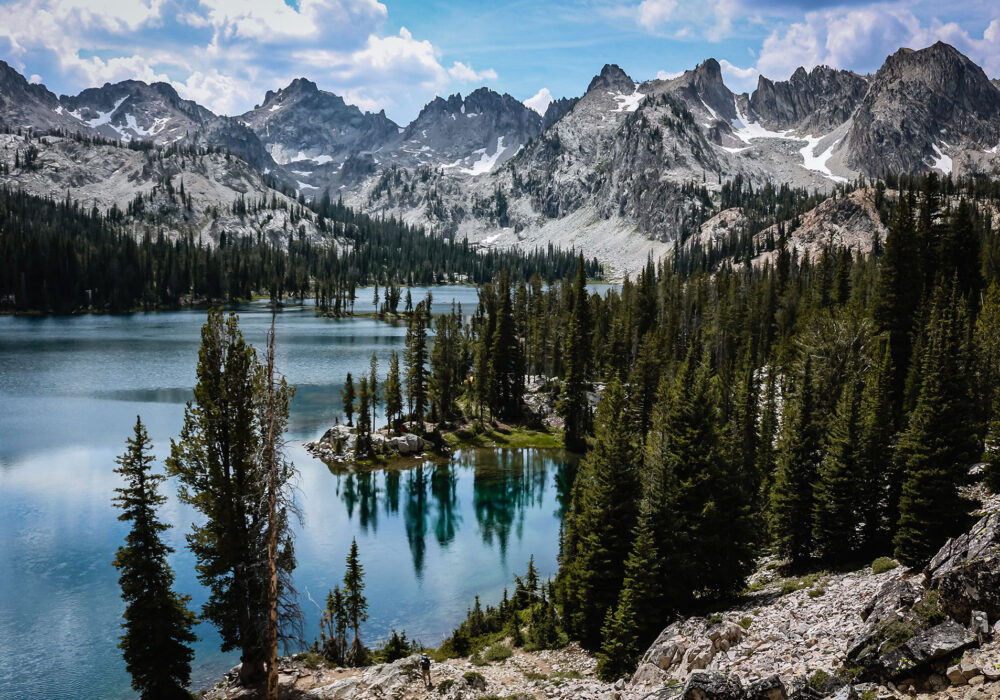
Alice Lake is more than just a beautiful destination—it’s a quintessential example of Idaho’s natural splendor. Its turquoise waters, surrounded by rugged granite peaks, offer a serene escape from the hustle and bustle of daily life. The journey to Alice Lake, whether as a day hike or part of a longer backpacking trip, is filled with opportunities to connect with nature and create lasting memories.
From its pristine wilderness to its unparalleled views, Alice Lake is a beautiful place in Idaho for anyone seeking adventure or tranquility in Idaho’s great outdoors. Whether you’re pitching a tent by the lake’s edge, fishing for brook trout, or simply soaking in the beauty of the Sawtooth Wilderness, Alice Lake promises an experience that will leave you inspired and longing to return.
Quick Facts About Alice Lake
- Location: Alice Lake is nestled deep within the Sawtooth Wilderness in Idaho, accessible via the Tin Cup Trailhead at Pettit Lake.
- Elevation Gain: The hike to Alice Lake covers 11.6 miles round trip and includes a 1,600-foot elevation gain.
- Part of a Loop: Alice Lake is part of the famous Tin Cup Hiker’s Loop, which connects several alpine lakes, including Toxaway Lake and Twin Lakes.
- Scenic Surroundings: The lake is surrounded by stunning granite peaks, including Idaho’s “El Capitan” and the jagged ridgeline known as the “Dragon’s Back.”
- Seasonal Accessibility: The best time to visit is from July to September, when the snow has melted, and the weather is warm.
- No Campfires: Campfires are prohibited in the Alice Lake drainage to protect the fragile alpine environment.
- Fishing Spot: Anglers can enjoy fishing for brook trout in the lake, but a valid Idaho fishing license is required.
- Creek Crossings: The hike includes four creek crossings, which may require water shoes during the spring and early summer due to high water levels.
- Backcountry Camping: Free backcountry camping is allowed, but campers must stay at least 100 feet from lakes, streams, and trails and follow Leave No Trace principles.
- Wildlife & Safety: Alice Lake is home to a variety of wildlife, including marmots and the occasional black bear, so proper food storage is essential.
Idaho’s Mammoth Cave
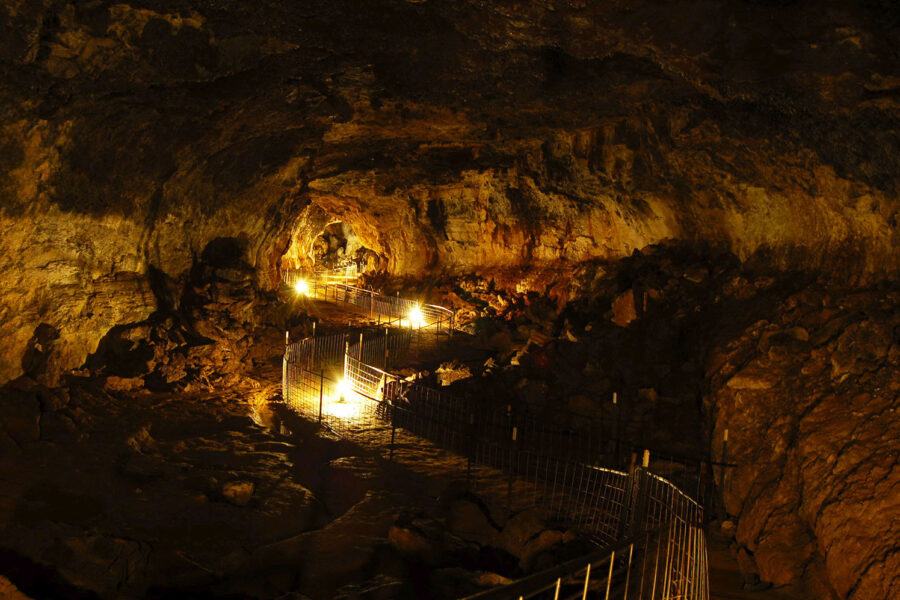
Planning a trip to Idaho? Don’t forget to put Idaho’s Mammoth Cave at the top of your list. As one of the most beautiful places to visit in Idaho, you can explore a unique and awe-inspiring underground landscape at your own personal pace with our self-guided tours. In addition to the cave, there are two privately owned museums of natural history on-site, the Shoshone Bird Museum and the Richard Arthur Olsen Museum featuring a wealth of exhibits that has earned them nickname “The Smithsonian of the Desert,” making it an unforgettable stop for the whole family.
Located eight miles north of Shoshone, Idaho, on Highway 75, Idaho’s Mammoth Cave will be open for seasonal tours from May – October, from 10 a.m. to 6 p.m. (with the last tours of the day going out at 5 p.m.), 7 days a week, including all major holidays. For more information, visit idahosmammothcave.com or call (208) 329-5382.
